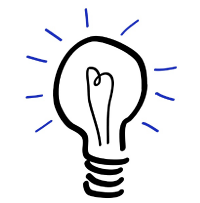We’ll be posting the complete program for this years’ Gilbane Conference over the next 2-3 weeks on the main conference website. The afternoon workshops are below.
Workshop D. Adaptive Content Modeling for Omnichannel UX
Speaker: Noz Urbina, Consultant and Founder, Urbina Consulting
Thursday, December, 4: 1:00 p.m. – 4:00 p.m.
Your users need you to come to this session, even if they don’t know it. Multi-channel, or “COPE (create once, publish everywhere)”, content is a bit of a holy grail. Our trade is discussing content being freed from the browser, available for reuse, and accessible in apps, kiosks, responsive mobile deliverables, eBooks and syndication services to our partners – even in wearable technologies. All this should improve the experience of users, and benefit the organizations that serve them. Adaptive content is content that is nimble enough to realize all these ambitions. But making our content adaptive means addressing a topic that sends many running for the fire exit or nearest window: semantic modeling of structured content. This session will connect the dots between adaptive content, responsive design, multi-channel delivery and user experiences to show you why you want and even need to have semantic content structures. It will then go through a non-terrifying introduction to getting started with modeling your own content in a future-proof way. Learning objectives:
- The knowledge that their content is already more structured than they realize.
- A solid sense of what semantic, structured content actually is and its relationship to adaptive content, multichannel, and UX.
This workshop is designed for either intermediate or expert attendees. Bring your laptop and go home with samples and templates.
Workshop E. CMS Implementations: The View from the Implementor’s Side
Speaker: Deane Barker, Director of Business Development, Blend Interactive
Thursday, December, 4: 1:00 p.m. – 4:00 p.m.
Ever wanted to know how CMS integration shops approach projects, and how you can better work with them or use their techniques in your own organization? In this workshop, Deane Barker will explain the ins and outs of CMS project work from the perspective of a veteran integrator, with the goal of helping you understand how best to find an integrator, work with your chosen integrator, or manage your project and team. Learn about how integrators:
- Evaluate RFPs
- Develop proposals
- Scope projects
- Schedule work
- Manage client expectations
- Plan implementations
- Select software
- Execute and manage development
- Support existing implementations
Workshop F. What’s it Worth? Assessing the ROI of your Content
Speaker: Lindy Roux, VP, Content Marketing and Strategy, Rauxa
Thursday, December, 4: 1:00 p.m. – 4:00 p.m.
No matter how well researched and deliberate your content strategy is, the proof lies in the pudding and the most successful content professionals continually evaluate the effectiveness of their content and adapt their strategies to improve the return. Too often, content is evaluated or audited only when a major digital shift is in play (a move to a new CMS, a new marketing automation tool, a new campaign launch.) In order to be truly successful, that evaluation should be ongoing, providing the opportunity to learn from past content marketing successes and failures. Lindy Roux will demonstrate an approach to content evaluation across multiple channels, based on qualitative and quantitative assessments, which has been used to help organizations understand the true ROI of a piece of content. The session will end with a practical exercise in content evaluation where participants will try their hand at developing assessment criteria and then applying these to real content. Participants in the session will learn:
- How to establish content goals that are measurable and realistic
- A way to evaluate content against these goals
- How to establish a regular review workflow and process
- An approach to optimization across all channels
- The appropriate team structure for ongoing content performance


